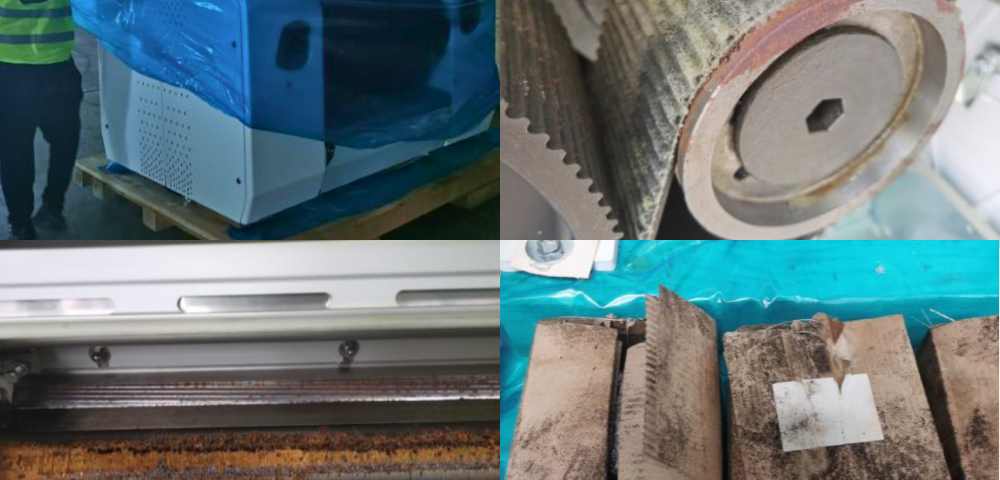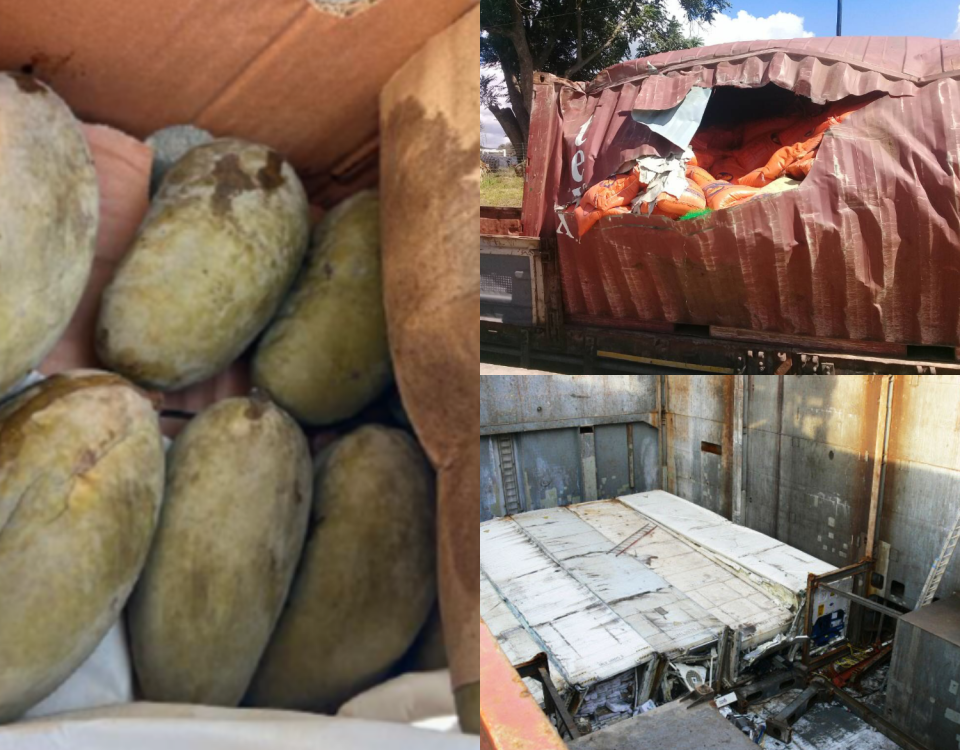Concealed Cargo Damage Claims

Should I Get Experts Involved to Recover Unpaid Trade Invoice?
January 22, 2024
Four Myths in Fresh Produce Cargo Claims
February 9, 2024Imagine meticulously packaging your cargo, inspecting it upon delivery, signing the Proof of Delivery (POD) as “clean,” only to discover damage upon unpacking. Concealed Damage is an undeniable challenge in cargo shipping, referring to damage that may have occurred during transit but was not documented on the Equipment Interchange Receipt (EIR) or POD.
From the outside, cargo might appear intact, as illustrated in the image above. However, meticulous inspection reveals rusted metal parts, moldy belts, and damaged spare parts, all concealed evidence of water damage that might have dried prior to delivery.
Concealed damage in cargo shipments can occur across various types of goods, but it tends to be more prevalent in certain categories due to their susceptibility to hidden flaws or vulnerabilities during transportation. One common category includes electronics, glassware, and ceramics. Despite careful packaging, these items are prone to concealed damage from vibrations, impacts, or shifts during transit. For example, delicate circuitry in electronic devices or intricate designs on glassware can be compromised without visible external signs, leading to concealed damage that becomes apparent only upon unpacking.
Another type of cargo susceptible to concealed damage is perishable goods, such as food products and pharmaceuticals. Despite being packaged and handled with care, perishable items can experience hidden spoilage, contamination, or deterioration during transit. Temperature fluctuations, humidity levels, and exposure to gases or chemicals in transit can contribute to concealed damage in perishable cargo, impacting its quality and safety upon arrival. Detecting such damage often requires thorough inspection upon delivery, as the signs may not be immediately visible, highlighting the importance of proactive monitoring and swift action in addressing concealed damage in perishable shipments.
Concealed damage claims are recoverable, but you must consider following these 4 steps.
1. Thorough Inspection at Delivery
When accepting the shipment, conduct a comprehensive inspection before signing the POD. If pressured, sign with “Pending further inspection.” This simple step can prove invaluable during the claims process.
2. Swift Action in Case of Concealed Damage
If concealed damage is detected, time is crucial. Immediately contact your freight forwarder, providing a detailed explanation. They will handle communication with the carrier while you document the damage through pictures and notes – crucial elements in the claims process. Carrier must be notified within 3 days of delivery and claim can be filed within 1 year of delivery.
3. Take Control of the Process
Assume an active role by notifying the carrier within three days after delivery and arranging an inspection appointment. While initiating a claim with the carrier is valid until one year after the delivery day, consider utilizing a third-party claim handler service, such as Recoupex, experts in the field.
4. Take Plenty of Pictures
The first rule of damage claims is especially critical for concealed damages – the more evidence you submit, the better protected you are against a denied cargo claim. Take pictures or videos of different points in the load’s progress, starting from the shipper’s packing procedures. Capture the initial and secondary inspections, the delivery inspection, including unopened boxes, visible damage, and the unpacked product. Document damages from every angle, with and without flash or in different lighting scenarios. Supplemental pictures of paperwork noting damages strengthen your case.
In the event of concealed damage, don’t linger in surprise! Act swiftly, report it, document it, and turn surprise into a solution. Understanding the drill ensures you are equipped to handle concealed cargo damage effectively, increasing the likelihood of a successful cargo claims recovery.



